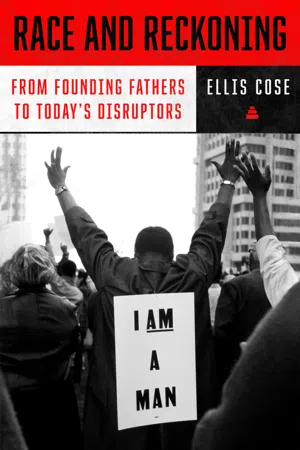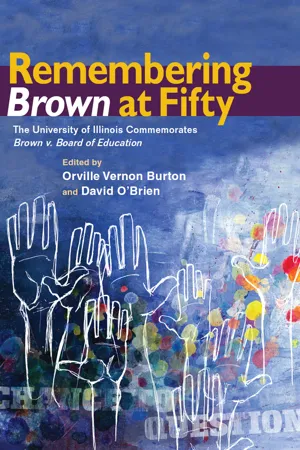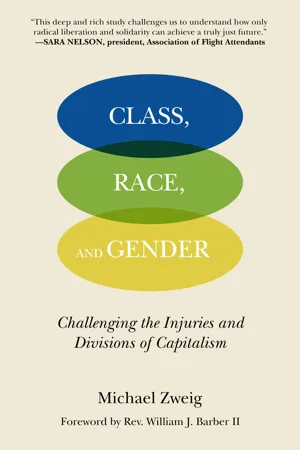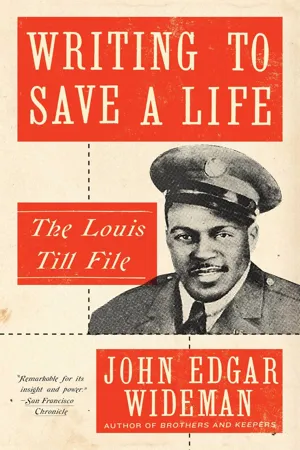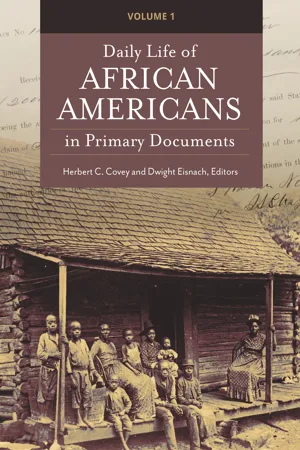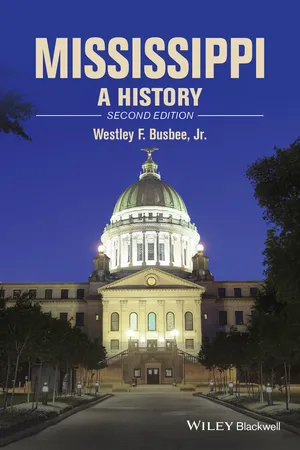History
Emmett Till
Emmett Till was a 14-year-old African American boy who was brutally murdered in Mississippi in 1955 after being accused of whistling at a white woman. His death became a catalyst for the civil rights movement, as the open casket funeral and the acquittal of his killers highlighted the deep-seated racism and injustice in the United States. Till's story continues to symbolize the struggle for racial equality.
Written by Perlego with AI-assistance
Related key terms
1 of 4
Related key terms
1 of 3
10 Key excerpts on "Emmett Till"
- eBook - ePub
In Remembrance of Emmett Till
Regional Stories and Media Responses to the Black Freedom Struggle
- Darryl Mace(Author)
- 2014(Publication Date)
- The University Press of Kentucky(Publisher)
These short-term efforts ensured that Till’s death continued to figure prominently in public discourse and, thereby, influence the way in which people responded to the American narratives of post-World War II race relations. Certainly, throughout the rest of the 1950s, and across the 1960s and 1970s, activists in the civil rights and black power movements would continue to invoke Till’s death as a rallying cry in their efforts to strike down segregation and all vestiges of Jim Crow white supremacy. With his death, Emmett Till inspired a generation.Reflecting on their work within the movement, civil rights champions from across all the most highly publicized clashes in the movement pointed to Till as an impetus for their refusal to accept business as usual when it came to race relations. Rosa Parks famously noted that he was on her mind when she refused to give up her seat on the Montgomery bus. An active member of the Montgomery chapter of the NAACP, Parks doubtless followed the Till saga through the pages of local and national press outlets. She would have seen in Montgomery’s NAACP office, and likely too in her home, issues of The Crisis in which were detailed the horrors that befell the fourteen-year-old boy as well as Mississippi’s intransigence in the face of mounting criticism of its racial mores. For Rosa Parks, and for many other blacks in the South, coverage in national publications like Jet and accounts in local editions of the Defender and the Daily World publications proved impossible to ignore.2 - eBook - ePub
Race and Reckoning
From Founding Fathers to Today's Disruptors
- Ellis Cose(Author)
- 2022(Publication Date)
- Amistad(Publisher)
10Rage, Resistance, and the Politics of Resentment
From the mid-1950s to the late 1960s, the United States was a boiling cauldron of racial chaos, with hope, despair, progress, and hate boiling over almost daily. It was a period during which much of White America was forced to concede what Blacks and other people of color had known all along: that its customary treatment of more than one tenth of its population was not just immoral but foolish. During the period between the murder of Emmett Till and the assassination of Martin Luther King, Jr., most Americans accepted (grudgingly, in many cases) that the country was inexorably changing.Emmett Till was not the first young Black man to be murdered on suspicion of flirting with a White woman. Nor was he the only innocent victim of racially motivated torture. But his death in August 1955 ignited outrage that persists to this day—in part because his mother invited the world to bear witness to what bigoty had done to her son.For his alleged act of interracial disrespect, Till was kidnapped, stripped, mutilated, murdered, and tossed into Mississippi’s Tallahatchie River. His mother, Mamie Elizabeth Till-Mobley, insisted on an open casket at her son’s funeral. “Let the people see what they did to my boy,” she insisted. And her boy received a sendoff worthy of a head of state. According to the Chicago Defender, more than fifty thousand mourners visited the funeral home to pay homage as his body lay in state. Throughout the night people came, forming lines stretching around the block.Roberts Temple Church of God in Christ, where the service was held, could hold only two thousand. Several thousand more listened to the service over a public address system. Inside, according to the Pittsburgh Courier, “One woman fainted at the sight of Emmett’s battered remains. Others broke [into] loud and piercing, screaming sobs.”The Defender - eBook - ePub
Remembering Brown at Fifty
The University of Illinois Commemorates Brown v. Board of Education
- Orville Vernon Burton, David O'Brien, Orville Vernon Burton, David O'Brien(Authors)
- 2022(Publication Date)
- University of Illinois Press(Publisher)
Defender. They saw the picture. They were horrified. They felt vulnerable. For at least a generation, black kids were exposed to the Emmett Till story in what would become a rite of passage. They were deeply moved by it.It stripped them of the protection of their childhood. That sense of innocence. For so many the story of Emmett Till became the introduction to race relations in America. Little black kids have grown up learning that there are people out there—white people—who can cause them harm, kill them, for no other reason than the color of their skin. There would no longer be a safe place to hide from a dangerous reality—and a realization. Everybody had to take responsibility for what we had become. Anyone who had done anything to cause the problem. Anyone who had done nothing to stop it from happening.There no longer could be any innocent bystanders. For an entire nation, the murder of Emmett Till marked the death of innocence.So, Brown redefined the legal relationships between blacks and whites. Emmett’s lynching moved people to want to fight for the change promised by Brown. And Montgomery provided the strategy of nonviolent, public demonstrations and boycotts.The rights … the motivation … the plan.And so many of those kids who had been Emmett’s age when he was killed and who were moved by that event, became involved in the civil rights movement when they came of age. It was a movement, after all, that was characterized by its youth. Foot soldiers. And later leaders and activists in social service and in politics and business.There were other effects.NAACP recruitment and fundraising. In the year after Emmett’s murder, membership and contributions spiked. I saw a report indicating that the organization took in roughly two hundred and fifty thousand dollars that year. A considerable increase. For a short period, Mother Mobley was out on a lecture tour supported by the NAACP, and she would address crowds and churches and rallies where thousands of people would fill barrels and trash cans with what they called “fighting dollars” for the NAACP. - eBook - ePub
Class, Race, and Gender
Challenging the Injuries and Divisions of Capitalism
- Michael Zweig(Author)
- 2023(Publication Date)
- PM Press(Publisher)
When, after World War II, gasoline stopped being rationed and became generally available, my parents wanted to explore their new country. My older brother and I excitedly looked at maps to see where we might go. When we unthinkingly pointed to the South, my parents were very clear: we will never go to Alabama, South Carolina, or anywhere else where, in the context of Jim Crow, we would have to answer the question “Are we white or are we colored?” in order to choose a seat or get a drink of water. To them, that was not a legitimate question: it was too much like what they had just fled, leaving behind the murderous choice “Are you a Jew or an Aryan?”In 1955 I saw the shocking magazine pictures of Emmett Till in his open casket after he was lynched in Mississippi.* He was fourteen. I was thirteen. I had heard many stories about the Nazi murders of my grandparents and tortures of other family members and friends of my parents, and realized how lucky my parents and brother were to escape. Now here the horror was in America. In an epiphany, I felt in some important way that I was in the same boat as Emmett Till, that we faced the same evil but in different circumstances. It came to me that I had to help make sure that this racist, murderous condition of US society would end as soon as possible.That’s when I began a long path to the ways of thinking presented in this book, which took a combination of years of practical movement building and study. These two aspects of political work—activism and study—have unfolded in the course of my participation in powerful social movements, principally the peace movements of the Vietnam, Central America, Iraq, and Afghanistan eras, the modern civil rights and Black freedom struggles, and the labor movement.I grew up in Detroit when its nearly two million residents made it a great manufacturing center, the fourth largest city in the US. I was deeply influenced by its vibrant union movement, rooted in the auto and trucking industries. The influences of that environment later led me to join those helping to organize the faculty and professional staff in the State University of New York system into United University Professions (American Federation of Teachers Local 2190), where I have been for many years a statewide and campus elected officer and executive board member. - eBook - ePub
Emmett Till in Literary Memory and Imagination
New and Selected Poems
- Harriet Pollack, Christopher Metress, Harriet Pollack, Christopher Metress(Authors)
- 2008(Publication Date)
- LSU Press(Publisher)
THE Emmett Till CASE AND NARRATIVE[S]
An Introduction and OverviewHARRIET POLLACK AND CHRISTOPHER METRESSIn the summer of 1998, a forty-nine-year-old black man was walking down a moonless road in Jasper, Texas. It was late, and three white men in a pickup truck pulled over to offer him a ride. He accepted, and the four men drove out of town. The next morning, James Byrd’s naked and dismembered body was lying near the gates of a black cemetery on a lonely stretch of Huff Creek Road in Jasper County.1For many, the echoes of 1955 were strong. While Emmett Till was young and James Byrd old, while Till had risen from the waters and Byrd had been left lying in the morning dew, both black bodies set in full view for an entire nation the implacable intensity of white racism. When authorities later found an Esquire magazine article on the Till case in the apartment of one of Byrd’s lynchers, the connection between the innocent young boy and the unsuspecting older man was more forcefully made. The fact that many news reports connected Byrd’s murder to the lynching of Emmett Till bears testament to a claim that is central to this collection: through its multiple tellings and retellings over the past fifty years, the story of Emmett Till haunts American memory and imagination. That haunting surfaces in the narratives we tell and the realities we live. Whether we are remembering it in the pages of a recent magazine or watching it reenacted again in the dark back roads of East Texas, what happened to Emmett Till is a presence that shapes the way we view and talk about race in America, sometimes wounding us, sometimes urging us to heal.The essays in this collection explore how the Emmett Till lynching circulates through cultural memory and imagination. To appreciate how the literary artists examined in this collection have explored the meaning of Till’s lynching—in explorations that both embrace and diverge from the historical record—it is helpful to understand the case as best we can.2 - eBook - ePub
Writing to Save a Life
The Louis Till File
- John Edgar Wideman(Author)
- 2016(Publication Date)
- Scribner(Publisher)
Just in case you don’t recall, I’ll remind you that in 1955, Emmett Till, also age fourteen, boarded a train in Chicago to visit family in Mississippi. A few weeks later a train brought his dead body back to Chicago. Emmett Louis Till had been murdered because he was a colored boy and had allegedly wolf-whistled a white lady.* * *Over half a century later, I’m still dealing with the faces of Clement and Till. To provide background for a fiction I intended to write about Emmett Till, I saved excerpts from newspaper coverage of the trial of Till’s murderers.Over sixty newspapers on hand in 1955 for the Sumner, Mississippi, trial. Thirty photographers popping flashbulbs, seventy reporters pecking away at truth on their typewriters. I was a bit surprised by how much national and international attention the trial had attracted. Not surprised to learn public interest had rapidly evaporated. Today Emmett Till is generally viewed as a civil rights martyr, but the shabby trial that exonerated his killers, and the crucial role played by Till’s father in the trial have largely disappeared from the public’s imagination. Silenced, the Till trial serves as an unacknowledged, abiding precedent. Again and again in courtrooms across America, killers are released as if colored lives they have snatched away do not matter.. . . the day opened hot and humid, the heat rising to an almost unbearable 95 degrees. (Chicago Defender ). . . townspeople of Sumner have never seen anything like it here—the crowds, the out-of-state newsmen and the excitement of a big trial—not even on Saturdays or when merchants conduct a drawing to give away an automobile . . . Citizens estimated as many as a thousand outsiders came, more than on the biggest trade days . . . a porter kept busy passing a pitcher of ice water to trial officials. Downstairs, a cold drink stand had its biggest day in history. (Memphis Commercial Appeal )Twenty-two seats were provided inside the rail for white newsmen where they could easily hear the proceedings . . . Negro press . . . limited to four seats directly behind the rail where the public is seated. (Chicago Defender - eBook - ePub
- Herbert C. Covey, Dwight Eisnach, Herbert C. Covey, Dwight Eisnach, Herbert C. Covey, Dwight Eisnach(Authors)
- 2020(Publication Date)
- Greenwood(Publisher)
6. “40,000 at Till Youth’s Funeral: Two Men Held on Murder Indictment” (1955)One of the most emotionally disturbing cases of lynching occurred when 14-year-old Emmett Till of Chicago was brutally murdered for allegedly flirting with a white woman in Money, Mississippi. There are several aspects of his murder that touched the national psyche. That a child of 14 years would be murdered so violently and heartlessly stunned many Americans. While lynching was still common in much of the South, it had yet to garner much concern or attention across the nation.In an act of great courage and emotional pain, Emmett’s mother, Mamie E. Bradley, insisted that during his funeral the boy’s coffin be open so the world could see what had happened to her son. The charming young boy who traveled to Mississippi on a vacation was brutalized so horribly that he was unrecognizable. Had Mrs. Bradley kept the coffin closed, few would have known the true horror of lynching and the hatred and racism that that fueled it.The following report from an African American newspaper published in Saint Louis, Missouri, touches on the crime, the boy’s story, interactions between NAACP officials and the governor of Mississippi, and most importantly the critical role the mother played in showing the world the terrible price young Till paid for racism. Emmett’s death and the trial that followed caught the nation’s attention and some would suggest contributed to the civil rights movement.Chicago—Funeral rites for Emmett Louis Till, the most recent victim of brutal Mississippi lynchers, were held here Saturday after more than 40,000 persons had filed past the slain youth’s body. The shot which felled the 14-year-old youth after he allegedly violated southern tradition by emitting a “wolf whistle” at a Mississippi white woman has aroused the entire country. - eBook - ePub
Bad Men
Creative Touchstones of Black Writers
- Howard Rambsy II.(Author)
- 2020(Publication Date)
- University of Virginia Press(Publisher)
That domain was part of even larger, historical domains focusing on innocent black males as criminals, systemic violence against black boys, and racial injustice in America. In his article “Emmett Till in Sanford,” published in the New Yorker, William Finnegan, like other commentators, highlighted connections between Till, Martin, and other black boy victims. “With this breadth and level of public attention and outrage,” writes Finnegan, “it is becoming possible to imagine the death of Trayvon Martin taking its place alongside, say, the death of Emmett Till as a terrible marker of the ongoing peril of being young, black, and male in this country.” 27 The frequent references to Till in Martin stories are recurring creative acts of allusion that remind audiences of the long histories of racial violence enacted against black boys. Such allusions intensified the perception of the contemporary incident as it unfolded. The pervasive coverage on Martin does raise questions about why there is comparatively less in-depth reporting on cases involving black victims and perpetrators. There is no question that black folks care about crime and violence between black people. Conflicts between white people and black people, though, seem to inspire more pronounced bodies of writing. African Americans have long spoken out against so-called “black-on-black crime.” Nonetheless, the most concentrated and voluminous creative output proliferates in cases of perceived racist violence and injustice like with Till and Martin. Leovy offers reasons why there is “relatively little research or activism specific to black-on-black murder.” On the one hand, she explains, researchers evade the subject “for fear of being labeled racist.” Focusing too much on “high rates of black criminality risked invoking the stigma of white racism.” Concurrently, many black community activists and commentators are inclined to downplay the subject of black homicide, especially with broad, diverse audiences - eBook - ePub
Mississippi
A History
- Westley F. Busbee(Author)
- 2014(Publication Date)
- Wiley-Blackwell(Publisher)
As if to confirm this new era of preoccupation with race, a leader of the NAACP, Gus Courts, was shot in Belzoni in 1955. But the incident that attracted the most attention during White’s last year in office involved the brutal murder of a fourteen-year-old African American, Emmett Till, who had arrived from Chicago to visit family members in Leflore County. According to witnesses at that time, Till jokingly whistled at a white woman in the town of Money “to prove” to his Mississippi cousins that he had white girlfriends back home in Chicago. A few days later several white men entered the house of Till’s great uncle, Moses Wright, during the night and kidnapped young Emmett. After a three-days’ search county law officers found Till’s horribly disfigured body in the Tallahatchie River. The funeral in Chicago and trial in Sumner, Tallahatchie County, Mississippi, attracted national news coverage. In September 1955 the two white men accused of the kidnapping and murder were acquitted by an all-white jury, despite the eyewitness testimony by Till’s uncle and other blacks.The Emmett Till episode had far-reaching consequences: it not only fueled the national civil rights movement but served as a harbinger of more racial violence in Mississippi. National coverage of the event raised concerns throughout the nation about violence against African Americans by whites in Mississippi and exposed via newspapers and television the disparities between Mississippi and the other states in the standard of living and illiteracy rates. Based on continuing and vivid recollections of Till’s cousins and other witnesses, the United States Department of Justice reopened the Till case in 2004, working with local Mississippi authorities to pursue possible accomplices in the murder. However, the FBI’s investigation, including the exhumation and autopsy of Till’s body, did not lead to any new indictments. The infamous Mississippi case remained a national emblem for the cause of civil rights into the twenty-first century.Governor James Plemon Coleman, 1956–1960
The election of 1955
Just before the Till incident, the Democratic party primaries named the state’s next governor. Five candidates entered the campaign in 1955, including Ross Barnett, Mary Cain, Attorney General Coleman, Paul B. Johnson, Jr., and former governor Wright. Although Wright was expected to secure a second full term, Johnson won the first primary and, surprisingly, the only first-time candidate, Coleman, came in second. In the second primary Coleman defeated Johnson, who was in his third campaign for governor, by a comfortable margin of 233,237 (56 percent) to 185,924 votes. There were no Republican candidates for state offices in the general election. This gubernatorial election further illustrates the breakdown of the state’s traditional voting patterns. Wright, from the Delta, had won the 1947 nomination in the first primary, but in 1955 he finished third in the first primary. Although Coleman was from Choctaw County, in the “Hills” region, he received the Delta vote in his second primary victory over Johnson and ran unopposed in the general election. - eBook - ePub
Building Students' Historical Literacies
Learning to Read and Reason With Historical Texts and Evidence
- Jeffery D. Nokes(Author)
- 2022(Publication Date)
- Routledge(Publisher)
Huie, 1956 ). Other texts include trial transcripts, an autopsy report, photographs, and letters sent from around the country in reaction to the Emmett Till murder and to the killers’ published confession. These letters paint a picture of an America deeply divided by the murder. Miss Anderson is hopeful that these texts, which all the students will review, will help them experience a different America, one in which many people condoned the killing of a teenage boy for crossing the lines of segregation, an attitude unfathomable to most people today. Together with the novel, Miss Anderson is confident that the texts will help students contextualize the civil rights movement and, perhaps, experience historical empathy for both the whites who stubbornly clung to traditional, oppressive race relations, and the Americans of every background that fought for change. For the remainder of the class period, students will work in small groups with a copy of this text set.Just before allowing students to get into groups to work through the documents, Miss Anderson asks them to try to feel historical empathy for the characters involved in this struggle. She points out that doing so will be easier when considering the perspective of those who were fighting for change than it will be when trying to understand the perspective of those fighting for tradition and segregation. “To be able to understand their perspective does not mean that you support their racist ideas or actions,” she explains.It means that you are trying to understand the social context that would produce people who viewed African Americans as inferior and who saw the world around them changing, threatening their way of life. They viewed the quality of their children’s schools being threatened as resources might be diverted toward other schools—or, even worse, from their perspective—their children might be sent to a run-down school with African American children. I know it will be difficult to understand their thinking, but consider people like Grandpa in the novel—these are not people like the villains in Disney movies who sing about how great it is to be evil. They are people who are fighting for what they think is best—even willing to kill to preserve their way of life.
Index pages curate the most relevant extracts from our library of academic textbooks. They’ve been created using an in-house natural language model (NLM), each adding context and meaning to key research topics.
Explore more topic indexes
Explore more topic indexes
1 of 6
Explore more topic indexes
1 of 4

